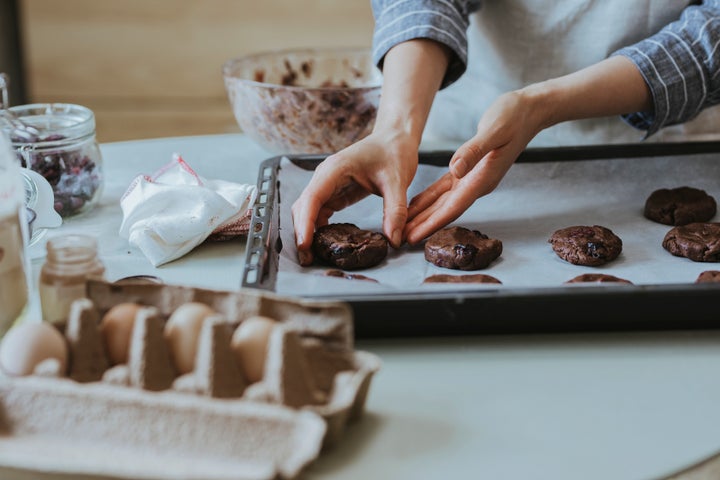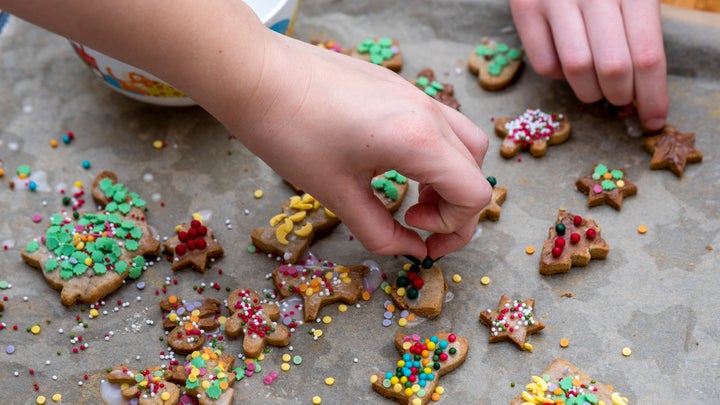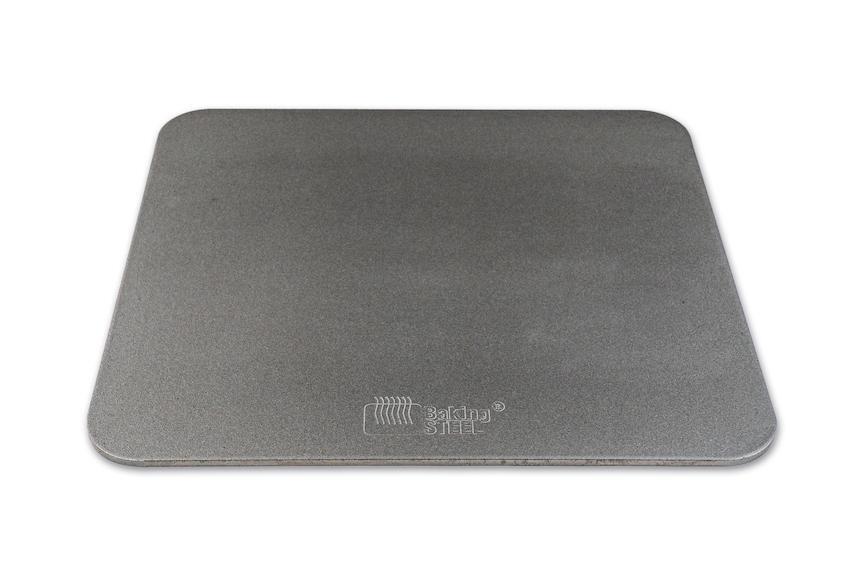Whether you’re new to cooking or you’ve been doing it for decades, it’s entirely possible you have no idea what you’re doing in certain areas. One particular topic that home cooks struggle with is understanding the differences between parchment paper, wax paper, aluminum foil and freezer paper, and when to use which one.
And trust us, mixing them up could legitimately ruin your recipe in some cases.
What’s the difference, and which materials are interchangeable? We talked to the experts to clear up any confusion you might have. Read on for the inside scoop on exactly when to use parchment paper, aluminum foil, wax paper and freezer paper — and exactly when you shouldn’t.
Parchment Paper

Thanks to its versatility, parchment paper is the shining star of the kitchen. It’s an odorless paper made from cotton fiber and pure chemical wood pulps that’s been coated with silicone. In addition to being nonstick, it’s heat- and moisture-resistant.
Parchment can be used for many kitchen tasks, but it’s best known for acting as a liner for baking sheets and pans, helping to promote even cooking and food not sticking. And according to Laura Ritterman, the cook behind the food blog Recipe Fairy, it also makes cleanup a whole lot easier. Think: being able to slide roasted veggies, cookies, fish and more right off the baking sheet with no mess.
“You can also line parchment paper on your kitchen counter to aid in cleanup,” said Christina Musgrave, a professional recipe developer. Because it’s nonstick and moisture-repellent, you can do all of your chopping, mixing, kneading and rolling on top of a layer of parchment, then toss it when you’re done, saving you the trouble of scrubbing down your countertops later.
Despite being super-versatile, parchment paper can only be used up to a certain temperature. “You can normally use parchment paper up to around 420 degrees Fahrenheit,” Musgrave said. “Heating it over that temperature can risk it catching on fire.” For safety purposes, always know the heat limit of the brand of parchment paper you’re using while cooking.
As for what to use as a substitute if you find yourself out of parchment paper, that depends on what you’re planning to use it for.
“Foil can be used to help prevent food from sticking, so long as it’s well-greased,” Ritterman said. (Or, if you’re specifically using a nonstick foil.) “It’s not as good as parchment paper, but can be used in a pinch if you don’t have any.” For easier cleanup, wax paper is a good choice for covering countertops.
Aluminum Foil

Runner-up in the versatility department is aluminum foil, which is made of over 98% aluminum ― the balance of which consists mainly of iron and silicon for added strength and puncture resistance. During the final rolling, two layers of foil are passed through the mill at the same time. The side that comes into contact with the polished steel rollers becomes shiny, the other side dull.
This is why, despite popular belief, it doesn’t matter which side of the foil contacts your food. (The only exception to this is nonstick foil, which does have a dull side that’s nonstick ― perfect for cooking foods that are cheesy or sticky.)
Where aluminum foil really shines (pun totally intended) is with high-heat cooking, like grilling and broiling. Any recipes that require cooking foods at a higher temperature than your parchment paper can hack, that’s where foil comes in.
Another handy skill? “Aluminum foil helps with even cooking or baking in the oven, mitigating the burning of food before it has finished cooking,” Ritterman said. “This is great for things like casseroles, roasts or pies.”
Say you don’t want your turkey or casserole to over-brown ― make a foil tent by placing a sheet of foil over your roasting pan or casserole dish, leaving a 1-inch gap between the top of your food and the foil tent for heat circulation, then crimp the foil onto the long sides of the pan so it stays put.
To keep your pie crust from burning while the center bakes, foil to the rescue: Take a 12-inch foil square and fold it into quarters. Cut out the center and round off the edges so you’re left with a ring that’s two inches wide. Unfold the ring and place it over your pie, removing it for the final 20 minutes of baking time.
“Because foil easily holds its shape, you can also wrap foods (meat, potatoes) to prevent them from losing moisture as they cook, as well as make foil packs of food to pop in the oven or on the grill,” Kyrie Luke, recipe developer and blogger at Healthfully Rooted Home, told HuffPost. (It’s an especially effective strategy for more delicate foods, like veggies and fish.)
But you should never use aluminum foil in the microwave. “Since aluminum foil is metal, it can heat so quickly that it can cause a spark and catch on fire,” Musgrave warned.
The best replacement for foil is parchment paper — specifically, for oven cooking and making food packs. For high-heat cooking, however, aluminum foil is difficult to replace, with the closest options being grilling papers and oven and barbecue bags.
If you’re not sure whether to go with aluminum foil or parchment paper, just remember: Grill or broil, go with foil.
Wax Paper

Wax paper is tissue paper that’s triple-waxed with a food-safe paraffin coating. It’s best known for covering countertops ― you can measure dry ingredients, such as flour, over wax paper and avoid a messy countertop during baking and cooking.
“It’s similar to parchment paper in that it can be used to keep food from sticking to surfaces, such as allowing chocolate-covered strawberries to harden or delicate artwork for cakes and pastries,” Ritterman said. It can even line pans for non-baked items, such as fudge or no-bake desserts to make cleanup easier.
Unlike parchment, wax paper shouldn’t be used in cooking situations that require heat. “Never use wax paper in the oven, microwave, grill or anything that conducts heat,” Luke said. “The wax will melt and it may cause a fire.”
The only exception to this rule is that wax paper can be used for lining cake pans for baking cakes. Because the cake batter completely covers the wax paper and absorbs much of the heat, the wax paper won’t smoke or melt.
The easiest way to remember whether to go with parchment or wax paper is to picture a burning candle as a reminder that wax melts. “The last thing you want is waxy food ― or a kitchen fire,” Luke said.
Freezer Paper
Freezer paper is a thicker paper that’s used for, you guessed it, freezing food. “It’s best known for wrapping meats and seafood for freezing to seal in juices and protect them from freezer burn,” Musgrave said.
One side of the paper is coated with either wax or plastic and provides a barrier to air and moisture that helps prolong the freshness, flavor and nutrition of your food while frozen, helping it last in your freezer for up to one year. Because the other side of the paper isn’t coated, it can be used to mark down the contents and pack date of the wrapped food.
Since freezer paper has a wax or plastic coating, it shouldn’t be heated ― otherwise, the wax or plastic will melt and ruin your food.
In a pinch, you can use heavy duty aluminum foil as freezer wrap, but because it can be torn and punctured easily, it’s best to use an overwrap, too.
“Wax paper can also replace freezer paper if you plan on eating the stored food in a short period of time,” Ritterman said. It’s not moisture-vapor resistant the way freezer paper is, though, so for longer storage times, freezer paper all the way.
